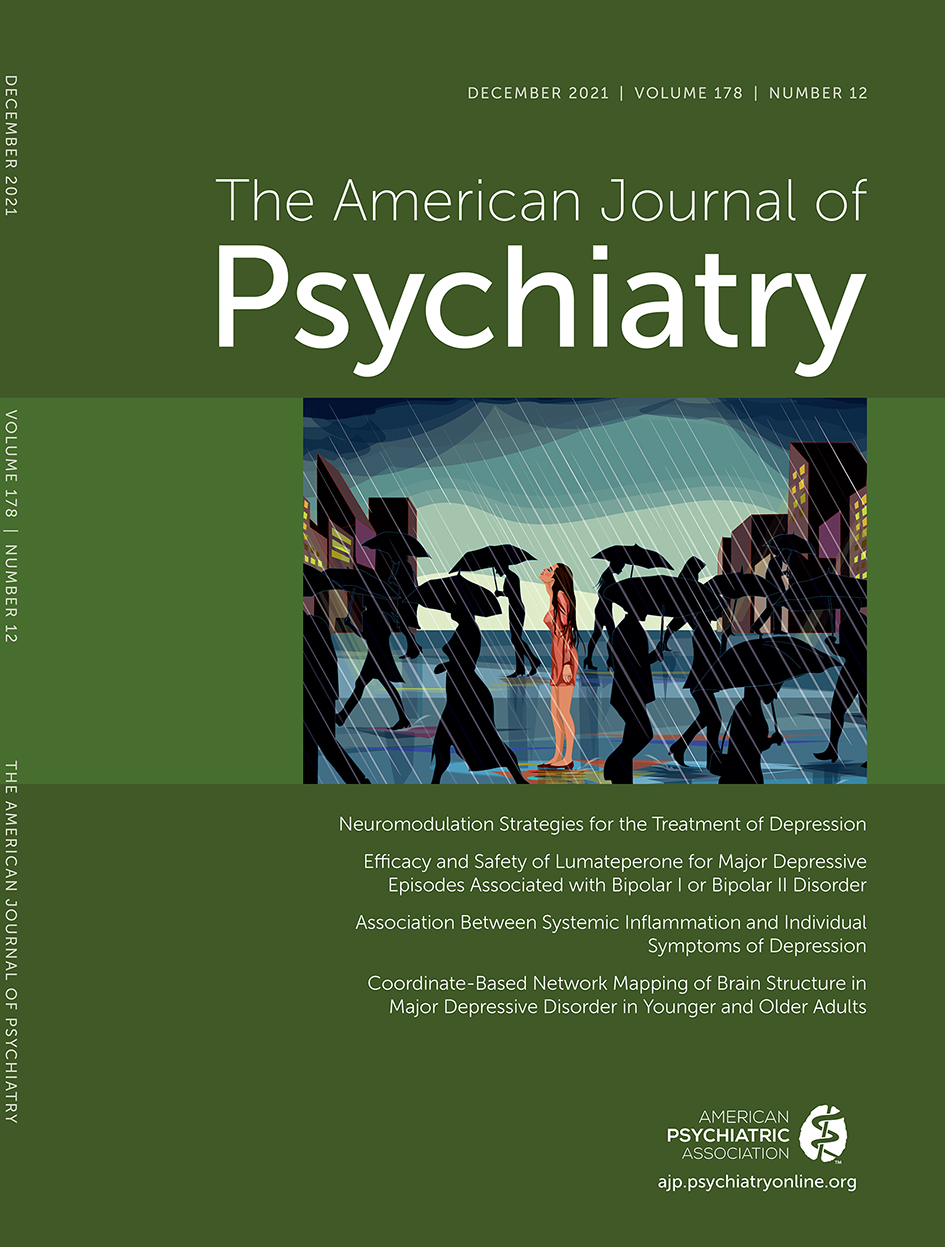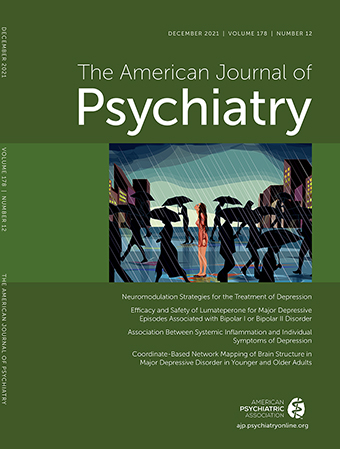Neuroimaging is one of many research fields that have been appropriately scrutinized for irreproducible results (
1–
3). Such scrutiny highlights underlying methodological and statistical issues that limit neuroimaging’s impact on psychiatric diagnosis and treatment (
4,
5). Some of these issues may be addressed with larger sample sizes. Neuroimaging consortia facilitate large-scale data collection and harmonization, resulting in data sets with thousands of patients (
6). However, cost and time remain noteworthy barriers to this approach. Meta-analysis is a complementary approach that may help circumvent these barriers while also boosting statistical power. There are various strategies for conducting a neuroimaging meta-analysis, most of which involve harvesting the coordinates of peak structural or functional changes from published studies. The most popular coordinate-based meta-analytic method is activation or anatomic likelihood estimation (ALE), which evaluates the spatial convergence of coordinates associated with a given disorder (
7). ALE searches for this spatial convergence across brain regions. However, coordinate convergence onto a single brain region may not tell the full story; many symptoms and disorders may map to brain circuits better than they do to individual brain regions (
3,
8,
9).
In this issue of the
Journal, Zhukovsky et al. (
10) use a relatively new meta-analytic technique called coordinate network mapping. This technique leverages the human connectome, a normative wiring diagram of the human brain, to map coordinates onto brain circuits rather than individual brain regions (
3,
8,
9). Zhukovsky et al. begin by highlighting a recent multimodal ALE meta-analysis that found no significant coordinate convergence in patients with major depressive disorder (
11). Do the results from the studies in this previous meta-analysis fail to converge, or is it possible that they actually have something in common? Zhukovsky et al. address this question by conducting an updated systematic review and meta-analysis of adults with major depressive disorder, older adults with late-life depression, and control participants without psychiatric diagnoses. Data from 14,318 participants in 143 studies were analyzed in two ways: conventional ALE meta-analysis and coordinate network mapping.
Zhukovsky et al. outline several important findings, but they emphasize the brain circuit similarities between major depressive disorder and late-life depression that were detectable with coordinate network mapping but not ALE meta-analysis. More specifically, coordinate network mapping showed that neuroimaging coordinates associated with major depressive disorder and late-life depression were both significantly connected to the frontoparietal control network and the dorsal attention network. The authors suggest that impairment in these networks might relate to hallmark emotional, motivational, and attentional abnormalities in major depressive disorder and late-life depression. Although there were some unique elements of major depressive disorder compared with late-life depression, Zhukovsky and colleagues’ coordinate network mapping results highlight common brain circuitry findings in depression across adulthood.
The study findings also raise several questions that could be addressed in future studies. First, are these results specific to major depressive disorder? Diagnostic specificity could be assessed by adding control coordinates from patients with psychiatric disorders other than major depressive disorder or from patients with neurological conditions. Zhukovsky et al. assess age and antidepressant treatment, but not diagnostic specificity (
3). The results of a specificity analysis would be important even if the findings were not specific to major depressive disorder. Neuroimaging studies typically focus on single DSM diagnoses despite mounting evidence of genetic, epidemiological, and neurobiological overlap between disorders (
12). For example, the largest transdiagnostic ALE meta-analysis of voxel-based morphometry studies suggests that there are convergent morphometric changes across DSM categories (
13). It would be interesting to study transdiagnostic convergence using coordinate network mapping, as Zhukovsky et al. have demonstrated that this network mapping technique may reveal novel insights into psychiatric disorders that are otherwise undetected with ALE meta-analysis.
A second question is whether these network results are different for different symptoms of major depressive disorder. For example, a previous coordinate network mapping study (
8) teased apart the circuits underlying cognitive deficits and hallucinations in patients with Parkinson’s disease. A similar approach could be taken with major depressive disorder by breaking apart the diagnostic construct into individual symptoms or symptom clusters. For example, a recent network mapping study found that distinct clusters of depressive symptoms respond preferentially to distinct transcranial magnetic stimulation (TMS) targets across independent retrospective data sets (
14). Zhukovsky et al. discuss clinical heterogeneity, but they had limited data with which to assess specific depressive symptoms.
Finally, an important question is whether these abnormalities are causally involved in major depressive disorder. It is challenging to make causal inferences with neuroimaging studies that identify correlates of symptoms or disorders (
15). Are morphometric changes associated with major depression causal, compensatory, or something else? The answer to this question may have therapeutic implications; focal brain stimulation techniques like TMS and deep brain stimulation (DBS) might alleviate, exacerbate, or have no effect on major depressive disorder, depending on which respective explanation is accurate (
9). Interestingly, the frontoparietal control and dorsal attention networks that Zhukovsky et al. implicate in major depressive disorder across the adult lifespan are functionally connected to brain lesion locations that cause depression as well as TMS and DBS sites that relieve depression (
16,
17). These convergent results across independent data sets and network mapping approaches may help to improve reproducibility and maximize the impact of neuroimaging on psychiatric diagnosis and treatment.

